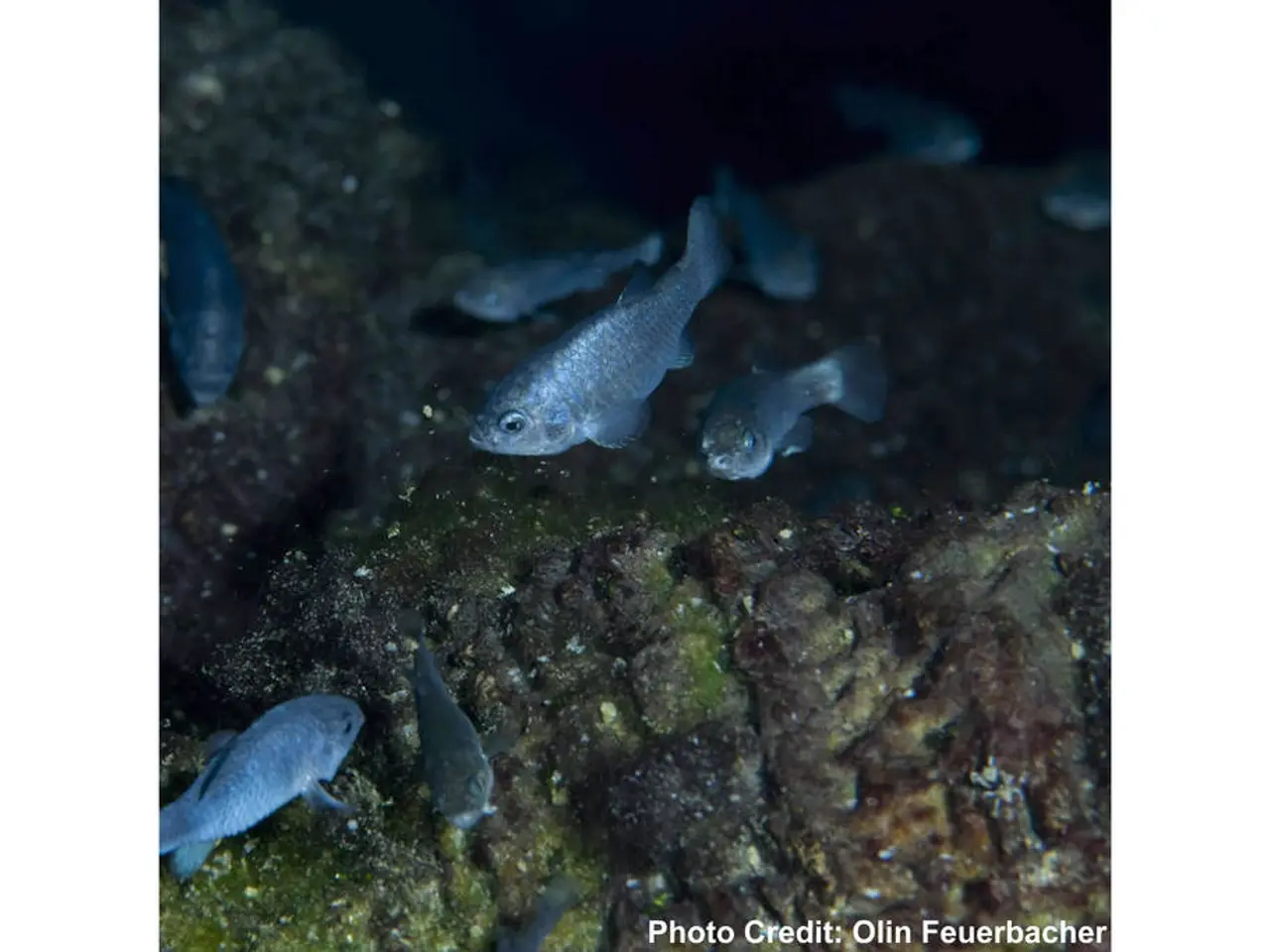Deep-Sea Inhabitants: An Overview, Their Role in Local Economies, and Their Significance for Tomorrow
Pelagic fish, living in the open waters of the world's oceans, have long been a vital source of protein and income for millions, particularly in India where nearly half of the marine fish landings come from these species. However, the high demand for pelagic fish, including tuna and sardines, has led to overexploitation over the years.
To safeguard these valuable resources, sustainable practices are essential. These practices focus on protecting fish stocks and supporting the livelihoods of fishers and farming communities through regulated fishing methods, science-based management, advanced technology, and conservation efforts.
One key sustainable practice is the implementation of seasonal restrictions and bans, such as the monsoon trawl ban in India, which helps prevent overfishing during breeding seasons and allows fish populations to recover. Another important measure is the expansion and enforcement of inshore exclusion zones (IEZs), which keeps industrial fishing vessels away from nearshore breeding grounds, safeguarding artisanal and small-scale fishers’ access to pelagic stocks.
Traditional fishing methods, like pole-and-line fishing, are also being embraced for their ability to reduce bycatch and support healthy populations. Marine Protected Areas (MPAs) combined with seasonal fishing restrictions offer a way to enable fish populations to regenerate while supporting regulated community fishing.
Science-based catch limits and quotas, enforced through stronger monitoring, electronic logbooks, and mandatory vessel tracking, are crucial in combating illegal, unreported, and unregulated (IUU) fishing. Advanced technologies, including AI-powered prediction and risk assessment tools, optimize fishing locations, reduce fuel consumption, avoid overfishing, and maintain sustainable yields.
Government schemes and community awareness programs, such as India's PM Matsya Sampada Yojana, provide funds, knowledge, and support for responsible fishing practices and sustainable income growth. Together, these practices help maintain pelagic fish stocks, ensure food security, and sustain the livelihoods of coastal and riverine communities dependent on fishing.
It is important to note that these harvesting techniques can lead to significant catches and unwanted bycatch like juvenile fish or non-target species. Mismanagement and under-reporting complicate efforts to maintain healthy fish populations. However, with continued commitment to sustainable practices and collaboration among fishers, governments, and conservation organisations, the future of pelagic fishing remains promising.
References:
[1] The Hindu BusinessLine. (2020, February 19). PM Matsya Sampada Yojana: All you need to know. Retrieved from https://www.thehindubusinessline.com/news/pm-matsya-sampada-yojana-all-you-need-to-know/article30682696.ece
[2] GhanaWeb. (2020, March 27). Ghana doubles inshore exclusion zone from 6 to 12 nautical miles. Retrieved from https://www.ghanweb.com/ghana-doubles-inshore-exclusion-zone-from-6-to-12-nautical-miles-542415
[3] Food and Agriculture Organization of the United Nations. (2019). The State of World Fisheries and Aquaculture 2018. Retrieved from http://www.fao.org/3/ca9556en/ca9556en.pdf
[4] European Commission. (2019, March 13). EU strengthens its fight against illegal fishing. Retrieved from https://ec.europa.eu/commission/presscorner/detail/en/ip_19_1636
[5] International Council for the Exploration of the Sea. (2020). Marine cooperative fleet coordination systems. Retrieved from https://www.ices.dk/marine-data/fisheries/cooperative-research-fisheries/Pages/default.aspx
- To ensure a sustainable future for pelagic fishing, the implementation of science-based management, advanced technology, and conservation efforts is essential, such as the use of AI-powered prediction and risk assessment tools.
- In the realm of health-and-wellness and lifestyle, consuming sustainable pelagic fish can support overall health while promoting the preservation of the marine ecosystem.
- In addition to protecting fish stocks and supporting fishers, sustainable practices in fishing can contribute to education-and-self-development by creating opportunities for responsible fishing through initiatives like India's PM Matsya Sampaada Yojana.
- On the environmental front, the expansion of inshore exclusion zones (IEZs) and implementation of seasonal fishing restrictions, such as the monsoon trawl ban in India, help safeguard nearshore breeding grounds and maintain environmental balance.
- General-news outlets report on the ongoing struggle to combat illegal, unreported, and unregulated (IUU) fishing, which can be addressed through science-based catch limits, enforced by stronger monitoring, electronic logbooks, and mandatory vessel tracking.




